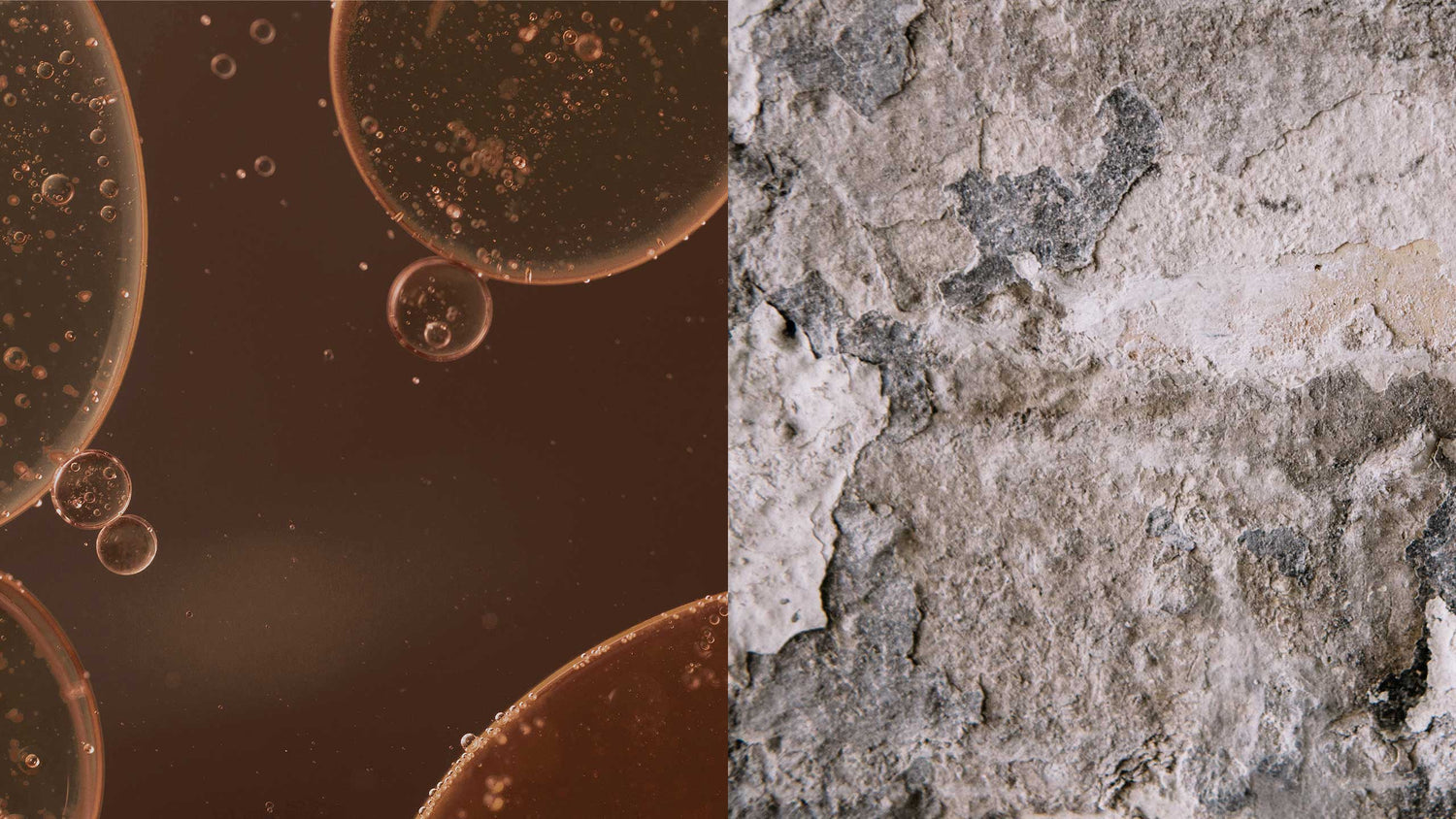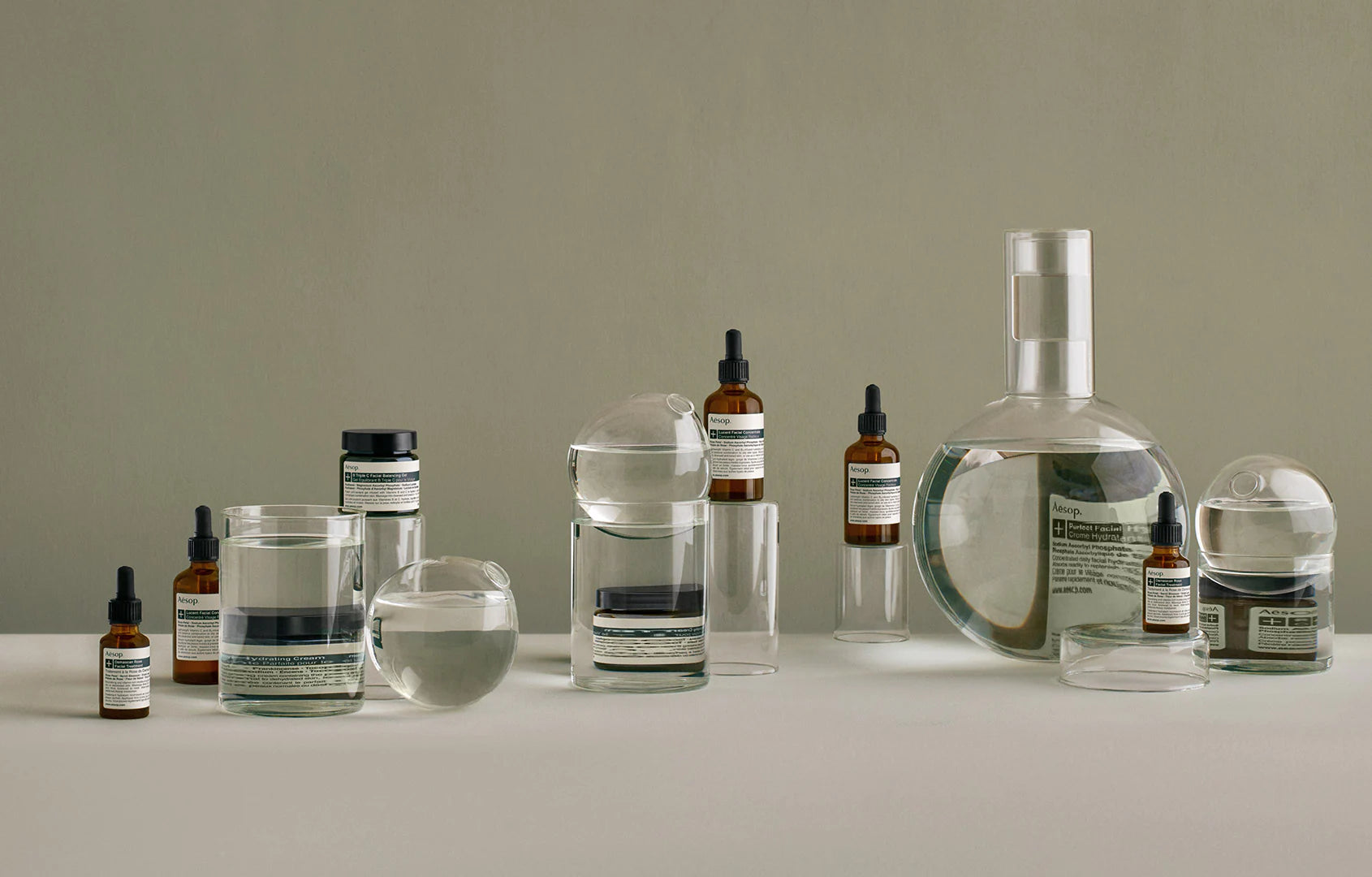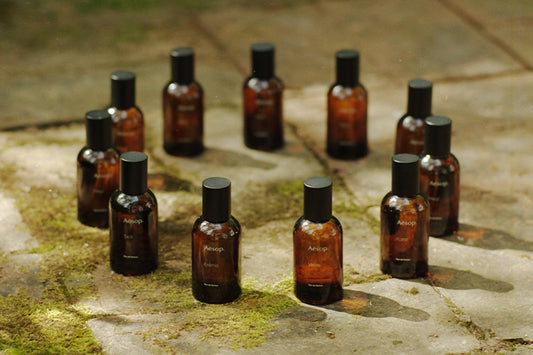Lessons from the lab
A guide to skin hydration
Well-hydrated skin is skin that can perform its barrier properties with all the mastery of a virtuoso.
The matter comes down to harmony. By maintaining the balance of oils and water in our skin, we give this remarkable organ the best opportunity to play its role to maximum effect.
Why hydration is essential to skin care
As a principle part of the composition of our bodies, water is both what we contain, and what we require. Replenishing its frequently expended stores is crucial to preserving a healthy level of hydration in our bodies, and importantly–as this article will make clear–in our skin.
We consistently lose water from our skin via transepidermal loss–a process in which moisture evaporates from the skin’s surface. It is also a process that obliges us to actively restore the water that is lost, to ensure the skin retains optimal hydration.
The composition of skin
Representing approximately fifteen per cent of the body’s total mass, the skin is our largest organ, and the prime boundary between our innermost workings and the world. It has a remarkable ability to maintain itself and assist certain functions of the body–especially when it is supported by ample sleep, a nourishing diet, and a considered skin care regimen.
The skin is comprised of three primary layers: the epidermis (the thinner, outermost layer), the dermis (made of strong, highly flexible connective tissue, sebaceous glands and sweat glands), and the hypodermis (also known as subcutaneous tissue, the thick, underlying layer of skin that contains fat cells). It is the epidermis–an agent of renewal and protection–that is concerned in the matter of topical skin care. The epidermis itself consists of five layers, and it is the outer layer that confers the skin’s impressive barrier properties.
Called the ‘stratum corneum’, this outermost layer of the skin is composed of flat cells called ‘corneocytes’. These cells are surrounded by a lipid-rich matrix. One way to think of the stratum corneum is as a ‘brick wall’, the corneocyte cells being the ‘bricks’, and the lipid-rich domain the ‘mortar’. This arrangement lends the stratum corneum its remarkable barrier function, which performs at its best when consistently tended to with a nourishing, fortifying and hydrating skin care regimen.
To achieve optimal hydration, the objective is two-pronged–to retain moisture in skin that is dehydrated, and boost moisture in skin that is dry. The kind of moisture that is required–water or oil–depends on your environment and skin type.
The different factors that affect skin
Our skin is our first point of contact with the world–the interface between us and our immediate environment. The UV light of the sun, climate, air quality and seasonal changes are but some of the environmental factors that impact the skin’s ability to perform its complex duties. Add skin type, diet and lifestyle to the bill, and we can only conclude that our skin is owed a debt of faithful maintenance.
Availing yourself of plentiful rest, nutrient-rich foods and ample water consumption are quotidian acts that will keep your skin nourished and hydrated from within. In addition to this, a well-considered skin care regimen tailored to your skin type and environment is imperative to supporting skin hydration from without.
In building such a regimen, an ideal place to start is identifying your skin type. While the terms ‘dehydrated’ and ‘dry’ are commonly used to refer to the same condition, they actually mean significantly different things in relation to our skin.
The difference between dehydration, dry and oily skin

Flaking. A dull complexion. An over-abundance of oil. These are just some of the signs that your skin will benefit from tailored hydration. The first step is to identify its precise condition.
Dry skin and emollients
Skin that feels patchy, flaky, rough or uncomfortably tight–particularly after cleansing–is most likely skin that is lacking in the oil, or sebum, produced by our sebaceous glands. Because dryness can compromise the barrier properties of the skin, it can also make our skin more vulnerable to moisture loss, and sensitivity.
Enter: emollients. These lipid-based substances feed the lipid ‘mortar’ of the stratum corneum (the skin’s outermost layer) and ensure that overall hydration levels are maintained. An emollient-rich moisturiser will help to smooth, soften and support skin that is prone to dryness.
Among Aesop’s ample offering of hydrating products suited to dry skin, Fabulous Face Oil is an excellent oil-based formulation for those with a preference for a lighter skin-feel. For alternate textures to a facial oil, Parsley Seed Anti-Oxidant Facial Hydrating Cream and Camellia Nut Facial Hydrating Cream are both potent, soothing options. Each imbued with their own nourishing blends of botanical extracts, these formulations are soft and supple to the touch, while leaving a matte finish. A dewier result can be achieved with fatty-acid rich Primrose Facial Hydrating Cream–an aromatically floral, earthy and herbaceous product that is ideal for normal to dry skin in a wintry or cool environment.
In addition to the daily use of a favoured hydrator, those with dry skin will benefit from the occasional application of a deeply hydrating facial treatment. Parsley Seed Anti-Oxidant Facial Treatment is but one such delight–a lightweight but potent formula of blended oils, anti-oxidant rich botanicals and Vitamin E that is best massaged into cleansed and toned skin, three times weekly.

Dehydrated skin and humectants
Where dryness denotes a lack of oil in the skin, dehydration refers to a lack of water, or moisture. This state, which can render the skin dull, calls for more generous approaches to sleep and water-drinking–and for the liberal application of a hydrator replete in humectants.
As molecules that attract, bind and draw water to the skin’s surface, humectants are a boon for dehydrated skin. The moisture they bring to the skin further supports its barrier properties, while improving overall moisture retention. Ingredients like Panthenol, Glycerin and Sodium Carrageenan are included in many Aesop products for their humectant properties.
Parsley Seed Anti-Oxidant Hydrator, which features Panthenol, is a rapidly absorbed moisturising fluid for the face that nourishes and protects the skin. Another daily-use product is Lucent Facial Concentrate–a lightweight, vitamin C-rich serum that will soothe and balance dehydrated skin while replenishing moisture. Blue Chamomile Facial Hydrating Masque is a marvellously intensive restorer of hydration that is best employed once-or-twice-weekly, as desired.
Oily skin and hydration
One would be forgiven for thinking it unnecessary–even undesirable–to apply a hydrator to oily skin. Au contraire.
An over-abundance of oil on the skin is often the result of excessive sebum production, which can be the calling card of genetics, hormones, environment or climate (in this instance, hot and humid conditions can be relentless culprits in exacerbating sebum production). And because dehydrated skin is a result of insufficient water or moisture, it can affect both dry and oily skin.
The answer lies in one wise principle: equilibrium. The optimal balance of moisture can be achieved with a regimen that gently removes excess oil and delivers light, non-burdening hydration to the skin, and products that have astringent, purifying and/or humectant ingredients. With its soothing base of Aloe Vera, Lightweight Facial Hydrating Serum is ideal for oily, combination and blemish-prone skin, and makes for a dream companion in warm or humid climates.
Woody and herbaceous in aroma, In Two Minds Facial Hydrator addresses the different conditions of combination skin by delivering gentle, effective hydration, and B Triple C Facial Balancing Gel nourishes and fortifies a spectrum of skin types with its potent doses of anti-oxidants, and vitamins B and C.
Finding the right hydrator for your skin
In determining the right components of your skin care regimen, it is vital to select a hydrator that responds not only to the specific needs of your skin type, but to the effects of your daily environment. It is also important to consider your own preferences for texture and skin-feel. For some, a serum or a concentrate with low-to-medium viscosity–or a light, fluid lotion–may be appealing. Others will find gels, or richer creams and oils, to be more favourable. All formulations are available. The choice is yours.
A perusal of this fabulous online tool will furnish you with everything you need to know.
Hydration: the skin care finale

A rousing crescendo. The final flourish.
There’s a primal satisfaction that comes with completing any act well. Rounding off your skin care regimen with the right hydrating product is just such a moment–a release, a relief, and a joy.
How to apply your hydrating product
In the instance of a facial skin care routine, it is prudent to expand the definition of ‘face’ to include the neck and the top of the chest. Often subject to the same exposures and demands as the face proper, these high-profile zones will profit from the same degree of focus and care.
When the prior elements of your regimen have made their exeunt, it is time for your hydrator to take the stage with all the presence and vigour of a prima donna. This is no time to hold back. Be liberal.
Pour, scoop or run the product in your hands, taking the opportunity to experience its aroma, colour, and texture. Apply it to your face, neck and chest in accordance with the label’s direction–with gentle massaging, tender pressing, or luxuriant swipes. Feel it sing on your skin.
Bravo!
Savour the sensation
From the simplest daily cleanse/tone/hydrate routine, to an extended twice-weekly repertoire that employs exfoliation and supplementary hydrating treatments, your skin care regimen will serve you best if it is a practice informed by attention and adjustment–and the singular pleasure of tending to your own precious skin. Savour every step.











